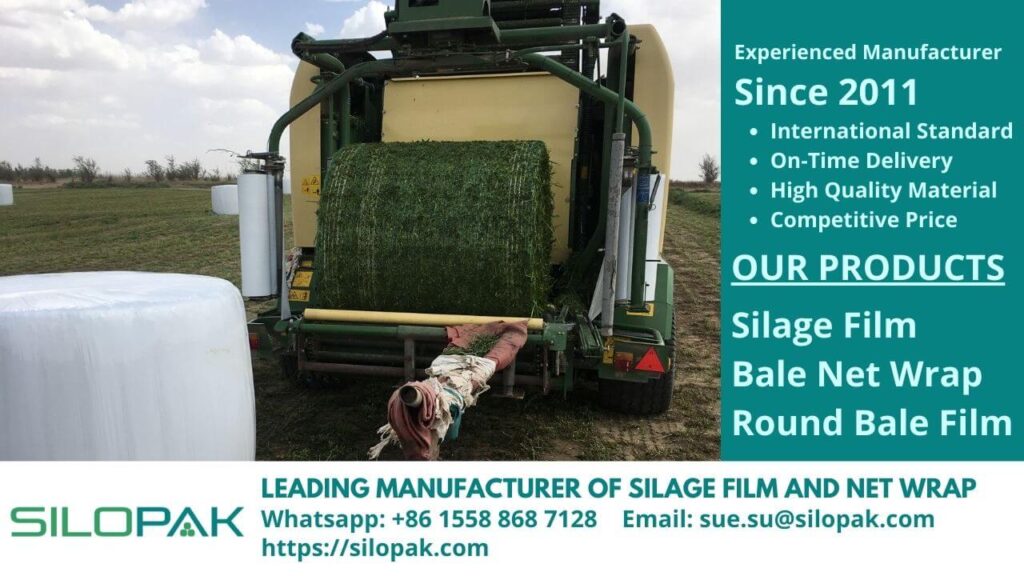
Silage made from grass is the best alternative feed for cattle when the pasture is under-productive, especially during the dry season. However, producing high-quality grass silage is not an easy job, and many farmers fail to do so.
If you are in the same situation, don’t worry! We have the best tips that can help you produce it.
contents
5 Things to Focus On
To produce high-quality grass silage, you should focus more on the following five things during the production process.
The Right Grass Varieties
You must choose the right grass variety for the pastures to balance yield and quality during the specified re-seeding period. In general, the preferred grass variety is Rye-grass because it can be combined with clover to increase yields and protein and reduce fertilizer requirements.
Proper Pasture Management
Proper pasture management is needed to produce high-quality grass silage. It is recommended to monitor pastures in the spring. The emergence of weeds can reduce the yield and quality of silage. If needed, you can use herbicides to treat it.
Also, carry out molehills control in November as molehills can contaminate silage and can damage the engine. It’s also a good idea to roll the field in early spring to bury the rocks.
During winter there is usually dead grass during the winter, you can rake the pasture in the spring to remove dead grass, or graze the cattle in late autumn to stimulate the growth of healthier grass.
pH Level & Nutrition
Lack of pH levels and nutrients can reduce the yield and quality of grass. In a day, use 2.5 kg/hectare of nitrogen for grass. In general, from one tonne of grass, there is 30% dry matter containing 2.1 kg of phosphate and 7.2 kg of potassium. So, make sure to replace phosphate and potassium regularly. Sulfur content is also considered important, especially in subsequent cutting in sandy and shallow soil types.
The Right Timing
Timing plays an important role in producing high-quality grass silage. So, every farmer must master it well. For example, silage cutting in June produced 3 tons of dry matter/ha containing 25% crude protein with a digestibility value of 75. Then, in silage cutting two weeks later, the dry matter yield increased to 6 tons of dry matter/ha, but the crude protein content decreased to 18%, and the digestibility value also decreased to 68.
Similar conditions occurred in the silage cutting in the next two weeks, the dry matter yield may normally reach 8 tons/ha, but the crude protein content decreased to 12%, and the digestibility value also decreased to 60. From this example, it can be seen that it is very important for farmers to know exactly how much silage is needed so that the cutting can be done at the right time.
The right timing is also needed in applying fertilizers and herbicides. You have to make sure the fertilizer or herbicide has enough time to process. So, the money you spend is not wasted. Also, make sure the grass wilts quickly, no more than 48 hours after cutting. You should wither 25% dry matter for tongs or 35-45% for bales.
Complete Harvest Preparation
Make sure the harvest preparation is complete so that the harvest goes smoothly. Starting from ensuring that all equipment is maintained and functioning properly to avoid costly damage at critical times, the readiness of the workforce, to the choice of techniques that will be used for cutting, planting, sweeping, and harvesting. With complete preparation, the harvesting process will be more efficient, and silage quality can be maintained well.
Silage Film Manufacturers
In silage production, you certainly need the best type of film to maintain the quality of the silage during the fermentation process. You can get the best types of film silage at Silopak.
We have been a globally recognized specialist manufacturer of silage film and bale net wrap since 2011. All of our products are manufactured according to international standards and using the highest quality materials. There are many variations and sizes that you can choose according to your needs.
So, do not let you experience expensive losses due to using poor quality film, which causes the quality of your grass silage to be poor as well. Order it from Silopak now!

